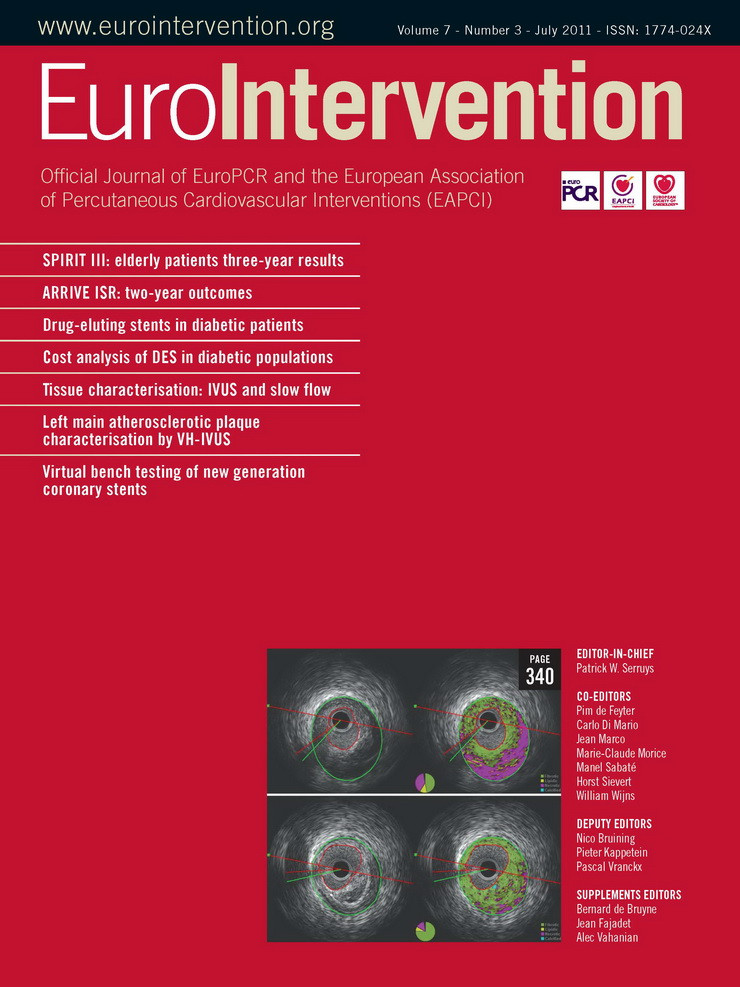Dear colleagues,
With these words, Wim van der Giessen ends his last published piece, an editorial in the current issue of EuroIntervention where he was one of our three Deputy Editors. In a world where we often want to slow down or reverse the steady movement of time, Wim was one of those visionaries who pushed the borders of our reflections, challenging our ideas and paving the way for the future. Even in this short editorial, you will catch his interest in creating a dialogue between all aspects involved in our work, here reflecting on why we would want to publish a paper on virtual bench testing.
Wim and his colleagues argue that the “interaction between engineers and doctors is important in our technology driven discipline”. The paper on “Virtual bench testing of new generation coronary stents” by Peter Mortier et al, evaluates the mechanical behaviour of six stent designs using computer simulations. Though the “results should be interpreted carefully as they are based on numerical models”, the insights here could be helpful in explaining “clinical observations”, providing us with “insights into the mechanical behaviour of different stents”.
Diabetes
The Lancet published an article in late June in on diabetes prevalence since 1980 which covers over 2.7 million participants worldwide. The authors, Goodarz Danaei et al1 concluded that “glycaemia and diabetes are rising globally...” with a need for health systems to “prepare to detect and manage diabetes and its sequelae.” In this issue of EuroIntervention we examine some of these issues, beginning with an editorial by Adrian P. Banning underlining the “many cogent reasons to pay particular attention to diabetic patients”, and the necessity in PCI in the diabetic patient “...where optimal outcomes are arguably the hardest to achieve”, to “employ our most efficacious treatments judiciously and with fastidious technique.” An introduction to two papers in this issue: one, an American paper on “cost analysis of four major drug-eluting stents in diabetic populations” by Ryan Saadi et al, and a second, looking at diabetes treatment from the perspective of imaging technologies in the “diabetes and drug-eluting stent (DiabeDES III) angiography and intravascular ultrasound trial” by Lisette Okkels Jensen et al where quantitative coronary angiography (QCA) and volumetric intravascular ultrasound (IVUS) are used to evaluate the effects of sirolimus-eluting and zotarolimus-eluting stents on angiographic late lumen loss and intima hyperplasia in diabetic patients.
Risk assessment, stratification and imaging
The importance of imaging has never been underestimated at our journal, where we focus on continued developments in the technologies and their applications. In this issue, a paper by Nestor Mercado et al concentrates on “Tissue characterisation of atherosclerotic plaque in the left main: an in vivo intravascular ultrasound radiofrequency data analysis” using virtual histology assisted intravascular ultrasound (VH-IVUS)”. From Japan, Makoto Utsunomiya and colleagues in their article entitled “Relationship between tissue characterisations with 40 MHz intravascular ultrasound imaging and slow flow during coronary interventions” show that there are clear clinical implications for imaging technologies where “tissue characterisation of plaque by iMap analysis of IVUS data may predict the risk of slow flow during PCI.”
Discussing these two articles, Clemens von Birgelen et al points out that the “while in clinical practice the frequency of LM PCI is increasing, risk stratification of such interventions may be particularly important” with future prospective studies needed to “address the question of whether the use of RF-IVUS based information on plaque composition may help to improve risk stratification of PCI in major coronary segments such as the left main stem.”
The future
Ending on a positive note, we welcome Nico Bruining, an expert in all these technologies and long time collaborator, as the new Deputy Editor for EuroIntervention. While we cannot replace those who have left us, we continue on in the path they have helped us create, laying the groundwork for our future work, research and practice while constantly reacting and strengthening the present.
We look forward to your ongoing support.
Reference

